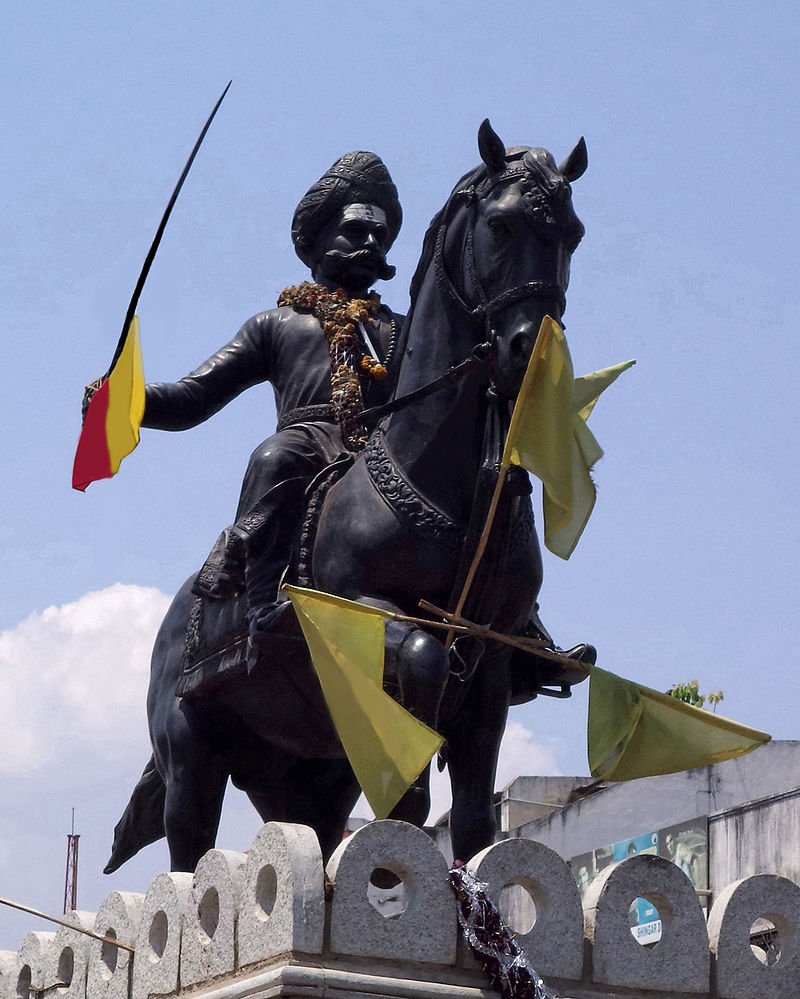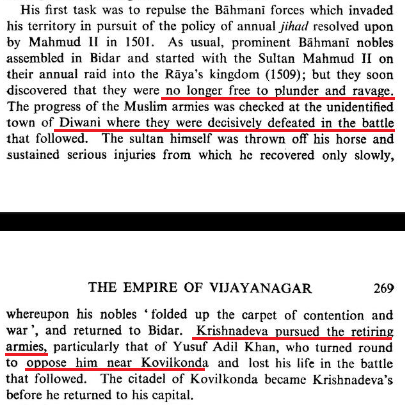
1.
#Thread on an unsung victory over Bahmanis (ca. 1447-53 CE)
Two Rajas from Konkan - of Sangameshwar & Khelna (Vishalgad) - united to stop aggression of Bahmanis into Konkan coast.
#Hindutva #Bahmanis #Maharashtra #Konkan
#Thread on an unsung victory over Bahmanis (ca. 1447-53 CE)
Two Rajas from Konkan - of Sangameshwar & Khelna (Vishalgad) - united to stop aggression of Bahmanis into Konkan coast.
#Hindutva #Bahmanis #Maharashtra #Konkan

2.
After over ~120 years of Bahmani subjugation of Deccan plateau Rajas, the Bahmani Sultans had turned towards conquering the Konkan coast in 1447.
After over ~120 years of Bahmani subjugation of Deccan plateau Rajas, the Bahmani Sultans had turned towards conquering the Konkan coast in 1447.
3.
1447: Alauddin Ahmed Shah Bahmani, the-then Bahmani Sultan, commissioned his commander Khalaf Hasan (title Malik-ut-Tujjar) to bring the Rajas of Konkan area under Bahmani control. He was sent with 7000 infantry & 3000 cavalry.
1447: Alauddin Ahmed Shah Bahmani, the-then Bahmani Sultan, commissioned his commander Khalaf Hasan (title Malik-ut-Tujjar) to bring the Rajas of Konkan area under Bahmani control. He was sent with 7000 infantry & 3000 cavalry.

4.
First, Malik-ut-Tujjar acquired Chakan fort after siege. He sent detachments to several areas of Konkan. Later, he himself proceeded to Konkan, through the south.
First, Malik-ut-Tujjar acquired Chakan fort after siege. He sent detachments to several areas of Konkan. Later, he himself proceeded to Konkan, through the south.

5.
1453: Raja of Khelna,Shankar Rao Shirke made a diplomatic play,by surrendering to Malik-ut-Tujjar on the condition that he invade his supposed-rival at Sangmeshwar.
Malik-ut-Tujjar tried converting him to Islam forcibly, but the Raja refused,unless his condition was fulfiled.
1453: Raja of Khelna,Shankar Rao Shirke made a diplomatic play,by surrendering to Malik-ut-Tujjar on the condition that he invade his supposed-rival at Sangmeshwar.
Malik-ut-Tujjar tried converting him to Islam forcibly, but the Raja refused,unless his condition was fulfiled.

6.
Due to the Raja's gloomy description to the Bahmani general of the dense Konkan jungles on the path to Sangmeshwar, many soldiers deserted the Bahmani army! Still the Raja gave him enough assurance to carry on the campaign to Sangmeshwar.
#Konkan #Sahyadris
Due to the Raja's gloomy description to the Bahmani general of the dense Konkan jungles on the path to Sangmeshwar, many soldiers deserted the Bahmani army! Still the Raja gave him enough assurance to carry on the campaign to Sangmeshwar.
#Konkan #Sahyadris

7.
On the other hand, Raja Shankar Rao Shirke, also sent secret word to Raja of Sangmeshwar regarding the Bahmani army movement. Raja of Sangmeshwar deployed 30000 infantry, lancers & artillery.
The army was adept in mountain warfare which was to ensue.
On the other hand, Raja Shankar Rao Shirke, also sent secret word to Raja of Sangmeshwar regarding the Bahmani army movement. Raja of Sangmeshwar deployed 30000 infantry, lancers & artillery.
The army was adept in mountain warfare which was to ensue.

8.
On the 3rd day of marching to Sangmeshwar, the Bahmani general took ill due to dysentry & the army camped in the remote valley amidst tall mountains.
The time was ripe for the Hindu Rajas' intrigue to bear fruit!!
On the 3rd day of marching to Sangmeshwar, the Bahmani general took ill due to dysentry & the army camped in the remote valley amidst tall mountains.
The time was ripe for the Hindu Rajas' intrigue to bear fruit!!
9.
At the night-time, the army of Raja of Sangmeshwar fell upon the Bahmanis. Bahmani army was surrounded. The general, Malik-ut-Tujjar was put to de@th.
More than 7000 Bahmanis were ki11ed, including 500 Syeds from Medina, Karbala & Najaf. The remaining army fled towards Chakan
At the night-time, the army of Raja of Sangmeshwar fell upon the Bahmanis. Bahmani army was surrounded. The general, Malik-ut-Tujjar was put to de@th.
More than 7000 Bahmanis were ki11ed, including 500 Syeds from Medina, Karbala & Najaf. The remaining army fled towards Chakan

10.
One can note the similarity of this lure & guerilla warfare in the episode of Shivaji Maharaj luring Adilshahi Afzal Khan to the dense jungles of Pratapgad.
History did repeat itself after ~200 years! (1453 -> 1659)
One can note the similarity of this lure & guerilla warfare in the episode of Shivaji Maharaj luring Adilshahi Afzal Khan to the dense jungles of Pratapgad.
History did repeat itself after ~200 years! (1453 -> 1659)
https://twitter.com/HindutvaItihas/status/1362767667489308674
11.
The two stalwart Rajas showed that the spirit of Konkan was not unsubdued. Thus, the Konkan tract still stood independent and mighty, as an inexorable fortress of Hindu resistance.
#Hindutva #History #HinduVictories
The two stalwart Rajas showed that the spirit of Konkan was not unsubdued. Thus, the Konkan tract still stood independent and mighty, as an inexorable fortress of Hindu resistance.
#Hindutva #History #HinduVictories
• • •
Missing some Tweet in this thread? You can try to
force a refresh






















